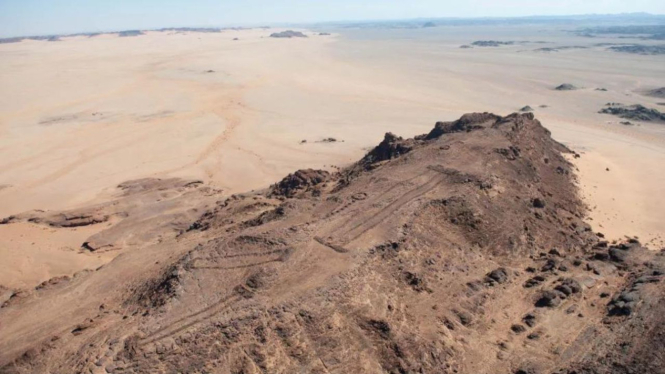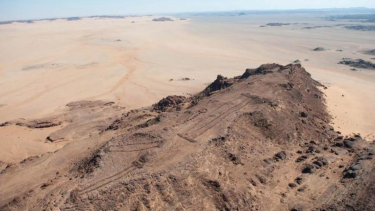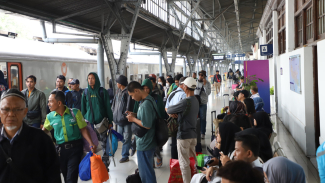- PLOS ONE
VIVA – Archaeologists in Saudi Arabia have discovered ancient human remains buried near hundreds of scattered animal bones inside a 7,000-year-old cult site.
The remains, those of an adult male approximately in his 30s, were found inside a mustatil, rectangular structure. The ruin is one of more than 1,600 mustatils discovered in Saudi Arabia since the 1970s.
Most are submerged beneath the sand. The structures were built when the Arabian Desert was a fertile grassland where elephants roamed and hippos bathed in lakes. Mustatil was built by members of an unknown cult.
As a change to the climate slowly transformed the land into a desert, cult members likely gathered to protect it by sacrificing their cattle to unknown gods, researchers say.
Now, a new mustatil excavation, detailed in a study published March 15 in the journal PLOS One, has revealed more details about the mystifying structures and their worshippers lost to time.
Mustatil yang digali peneliti.
- PLOS ONE
"Almost nothing has been written about mustatil and the beliefs that surround it. Only 10 mustatil have been excavated and this study is the first to be published. So, we still don't know much about this tradition," A study lead author also an archaeologist at the University of Western Australia, Melissa Kennedy explained.
Mustatils vary in their appearance, but they are typically long rectangles formed from low rock walls around 4 feet (1.2 meters) high. Excavations have revealed complex structures inside some of the ruins, including interior walls and pillars that give way to central chambers possibly reserved for feasting and ritual sacrifices, Kennedy said.
The mustatil excavated by the researchers, located 34 miles (55 kilometers) east of the ancient city of AlUla, is 460 feet (140 m) long and constructed from local sandstone. Its beytl is a large upright stone, around which the researchers found 260 fragments of animal skulls and horns.
The bone pieces are mainly from domesticated cattle, though the researchers said some fragments belonged to domesticated goats, gazelle, and small ruminants.
"They would most probably have brought animals with them, potentially slaughtered them on-site, offered the horns and upper parts of the skull to a deity, while potentially feasting on the rest of the remains," Kennedy stated.
The researchers could not confirm whether the slaughter took place on-site or elsewhere, as they found no animal remains. However, the slaughter likely took place on-site, as the horns were in excellent condition.
This suggests that perhaps only moments after the slaughter, the horns were removed and offered inside the mustatil.
Just north of the mustatil head, the researchers found a cist, a type of burial chamber built throughout the Neolithic and Bronze Age throughout Europe and the Middle East.
Analysis of the buried man's bones revealed that he was in his 30s or early 40s when he died and probably suffered from osteoarthritis, a degenerative joint disease.
Radiocarbon dating of the human and animal bones showed that the man was buried 400 years after the animals were slaughtered. The purpose of the mustatil ceremony remains an enigma as the structure of the desert landscape was built during the Holocene Humid Period.
The researchers think that there may be a connection between the rituals practiced inside these structures and a shared desire to bless the drying land with rain. They are now testing this hypothesis by geographically mapping the placement of mustiles close to prehistoric grazing lands, rivers, and lakes.
Ongoing investigations may reveal links between ancient religious practices and ancient climate crises in the region.
























